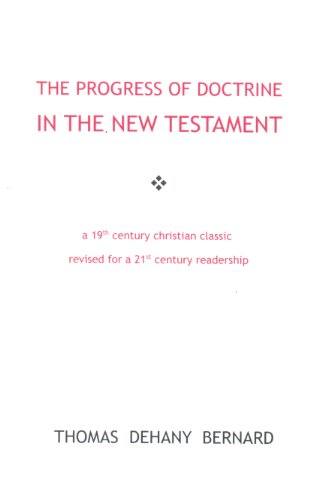A Brief Book Summary from Books At a Glance
By Benjamin J. Montoya
Editor’s Note: Here we offer a 19th century classic, originally delivered as the 1864 Bampton Lectures at the University of Oxford. This book was described by A.T. Pierson as “one of the grandest books of the century” and by Griffith Thomas as “indispensable to all Christians.”
Introduction
Doctrine is something that was present in the OT but develops and progresses throughout the NT. The NT is the canon of Scripture that presents the fulfillment of the OT in Christ, but it also helps us understand the significance of his life, death, and resurrection for the lives of Christians. This book is an older book, and thus it is written differently than many of us are accustomed to, but the concepts found in this book are still important for us today.
Table of Contents
Lecture I The New Testament
Lecture II The Gospels
Lecture III The Gospels
Lecture IV The Acts of the Apostles
Lecture V The Acts of the Apostles
Lecture VI The Epistles
Lecture VII The Epistles
Lecture VIII The Apocalypse
Lecture I: The New Testament
John 17:8, “For I have given them the words that you gave me, and they have received them and have come to know in truth that I came from you; and they have believed that you sent me.”
The discussion of the progress of doctrine is one that is deeply connected with the ministry of the Word. But, before we jump into our discussion, we need to consider some preliminary positions and outline our subject.
There are three preliminary positions to consider:
- There is divine teaching in the NT—doctrine given by the Father to the Son—by the Son to men.
- The divine teaching coincides in extent with the NT—not to be restricted to words of the Lord in the flesh. All of God’s Words are the Lord’s Words. We must not make a division.
- The plan of the divine teaching is represented in the NT. There is a scheme of doctrine progressively developed as a result.
To discuss this topic, we will use outlines for our subject:
- There is a real progress of doctrine in the NT that was visible in the OT.
- There are stages of progress of doctrine in the NT—marked by the Gospels, Acts, Epistles, and the Apocalypse.
- There are principles of the progress in the NT because of the relations of the Author, the facts on which the Gospels are founded, the human mind, and several parts of the doctrine to each other.
Lecture II: The Gospels
Mark 1:1, “The beginning of the gospel of Jesus Christ, the Son of God.”
There are two key points we need to learn about the Gospels:
- The Gospel collection in its relation to the whole NT forms the initiatory stage of a progressive plan. Fitted to this place and function, the Gospels present us with the person of Christ. This communication is the beginning of the gospel. The Gospels also present us with the very words of Christ. The very words of Jesus point us to himself directly.
- The Gospel collection in itself exhibits a progressive plan in the division of two distinct stages, in the character of the synoptic Gospels, and in the character of John’s Gospel relatively to others.
The remainder of this article is premium content. Become a member to continue reading.
Already have an account? Sign In
